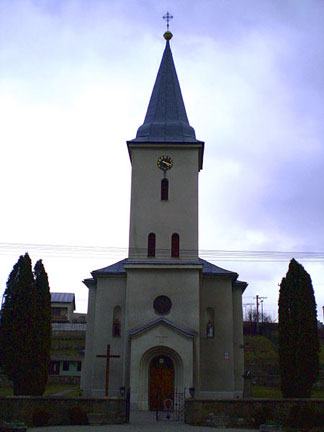
History
Names of the Village
1330 Lubotin, Lubentim, 1349 Lebeten, Lybytyn, 1773 Lubotiny, Lubotina, 1786 Lubotiny, 1808 Lubotin, Lubotina, 1863 Lubotin, 1907 Lubotény, 1920 Lubotiňa, Lubotýn, 1927 Ľubotín, mad. Lubotény.
Districts
Saris County, Kosice 1923-1928, Saris-Zemplén 1940-1945, Lipany District, 10.12.1922, Sabinov 1922-1960, 1960-1968 Prešov and from 1968 Stara Lubovna district.
Population Figures
1787 - 473, 1828 - 565, 1869 - 582, 1880 - 756, 1890 - 786, 1900 - 701, 1910 - 622, 1921 - 631, 1930 - 680, 1940 - 781, 1948 - 897, 1961 - 980, 1970 - 1100, 1980 – 1232 and 1991 – 1194.
Size of Village and Specifics
The village is 2,864 acres and at the center is 1,610 feet high. The earliest report dates to 1330 for the village by the church pastor, Stephen de Lubentin. There is some documentation that L’ubotin existed prior to the 1330 date but it has not been fully confirmed. There is a long stream which runs along the village and is named Ľubotín /Lybicin, Lybethin or Lubetin. The village area was mentioned in a definition of property of a nobleman named Rikolfa during the years 1287, 1296 and 1302. In 1313, King Charles I granted the western part of the valley Ľubotínky Rikolfovi by charter but the village existed due to a donation of property from Kamenica. The Lubotínsky property east of the stream was mentioned in the 13th century and belonged to the nobility of Kamenica. During the 14th to the 16th centuries there are a number of mentions of the name Ľubotín including a Slavonic name L’ubota. L’ubotin is one of the oldest Slovak villages existing before the 11th century and had ties to Plavec and Plavnica. The village begins to be mentioned frequently in the 14th century when feudal lords settled the area with tenant farmers. In the 14th century a church was constructed and existed into the 16th century. The village was owned by nobles of Kamenice and later the Dezofiovcov property was part of the estate of the castle. In 1427 peasant households were taxed and within a few years the tenant farmers were relocated and their land confiscated. In 1600 the settlement consisted of 12 tenant farmer homes, mills, schools a church and rectory. In the 16th century L’ubotin was a medium-sized village with a peasant population owned by the Lords of the Estate. In 1787 the village had 59 homes and in 1828 it had 75 homes. The village had a salt warehouse and dock with raft along the river. On May 1, 1873 the village acquired a railroad station that ran through to Orlov. The villagers made a living by farming, raising livestock, weaving and trading grain. After 1918, the villagers still worked in these occupations. On August 17, 1944 partisans destroyed the railway bridge and the village was liberated on January 22, 1945. A Revolutionary National Committee was formed on February 2, 1945 with Michael Dina as President, Vice-President John Dvorscak and Secretary Joseph Hoclar. In the 1946 elections of the 393 votes, 393 were for the DS and 33 were for KSS. After 1951 the JRD switched to the GOM Lipany. In 1969 a settlement called Podpilie was incorporated as a section of L’ubotin. In 1958 a primary school was constructed, in 1974 a kindergarten was added, in 1990 a medical, commercial center and municipal office building were built. In 1992 a sports stadium, police building, new roads a bus platform and many housing units were constructed.
Religion

Roman Catholic Church of the Virgin Mary constructed in 1905 in Romanesque style. A hand-made pipe-organ (manual) dating from the year 1906 is in the choir loft. The interior has paintings of the Virgin Mary standing on a snake’s head, on the right side of the altar there is a statue of St. Joseph with Jesus in his arms, on the left side of the altar is a statue of St. Anna with her daughter the Virgin Mary. Outside the church there is a very old statue of St. Cyril and Methodius.
Prominent Persons
John Fedak born in L’ubotin July 17, 1902 and died in Presov January 30, 1948. Teacher, linguist and a professor at a number of schools such as Michalovce, Berehovo and Presov. Professor at Teaching Academy in Presov, school administrator in Moravce, director of a High School In Nove Mesto nad Vahom. Expert linguist of Saris dialects



